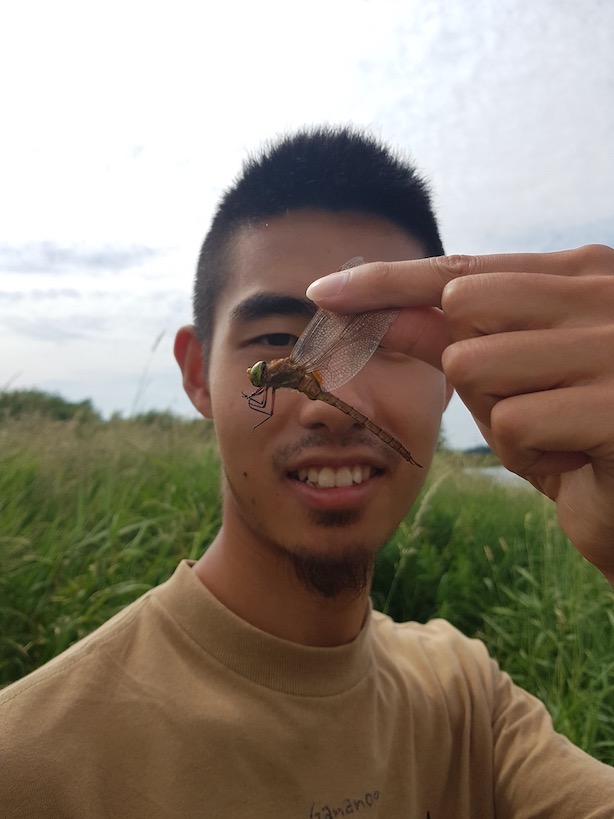2020.10 – Present: Ph.D. in the faculty of biology, Jagiellonian University, Poland
2018.09 – 2020.06: M.Sc. in biology, with specialization in animal ecology, Lund University, Sweden
2014.09 – 2018.06: B.Sc. in biological science, Beijing Normal University, China
I am broadly interested in the evolutionary processes underlying the genetic and phenotypic variations in Nature. During the first few years of my career, as a B.Sc. Student, I studied birds and plants. I studied avian blood parasites, their phylogeny, and how birds react to these pathogens with unique nesting behaviour. For my thesis, I worked on a domestic flowering plant, trying to understand how its life history, mating system, and floral traits evolve.
When I moved to Lund for my master’s degree, I studied Wolbachia in the blue-tailed damselfly, Ischnura elegans. Wolbachia is among the most common symbiotic bacteria in insects and is a master manipulator of insect biology. This research experience leads me into the field of animal-microbe symbiosis in insects. It also introduced me to the bizarre world of microbiome and made me think about the role of microbes in the evolution of animals and other life.
Currently, my work focuses on the genome evolution of symbiotic bacteria in planthoppers (Infraorder: Fulgoromorpha), a group of sap-feeding insects in Auchenorrhyncha (Order: Hemiptera). Planthoppers harbour two nutritional endosymbionts, Sulcia and Vidania, that provide essential amino acids absent in the diet of plant sap. The genomes of these two symbionts are extremely small (50-200kb) and highly streamlined after ~250 million years of coevolution with the host. Other symbionts, such as Sodalis, often join the company. However, symbionts' diversity, evolution, and functional roles in planthoppers are far from clear.
The tools I am using to characterize these small genomes include high-throughput sequencing techniques (Illumina, Nanopore) and various bioinformatics tools. During the first two years of my Ph.D., I characterised Sulcia and Vidania genomes in three planthopper species in the genus Pyrops and discussed the origin of betaproteobacterial symbionts in Auchenorrhyncha (doi.org/10.1101/2022.12.07.519479). Now I am investigating the unusual genome fragmentation of Sulcia in Delphacidae planthoppers.
In addition, I am also building up my expertise in phylogenomics, trying to reconstruct the phylogeny for global planthopper species. Between 2022/10 and 2022/12, I visited Prof. Niklas Wahlberg’s lab at Lund and assembled the analysis pipeline for phylogonomic reconstruction from metagenomic data. In May 2023, I joined the EMBO course ‘Computational molecular evolution’ in Greece. I learned how to interpret the models behind different tools and how to apply and select tools for different purposes of phylogenetic research.
Check out my researcher profile on ORCID: https://orcid.org/0000-0003-3669-7172
Follow me on Twitter: @JunchenDeng



